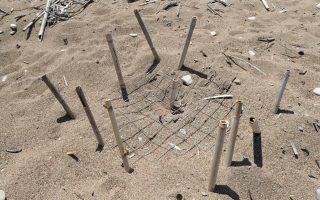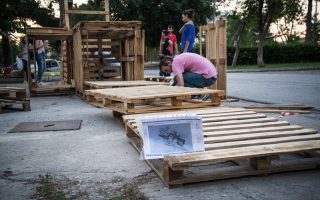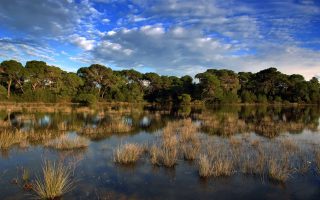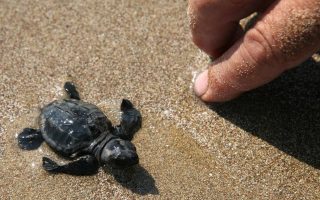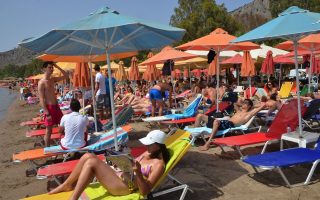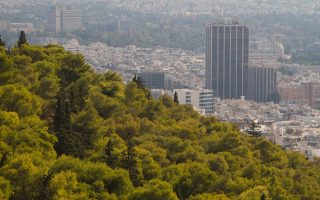Greece and China forge ties through petrified forest
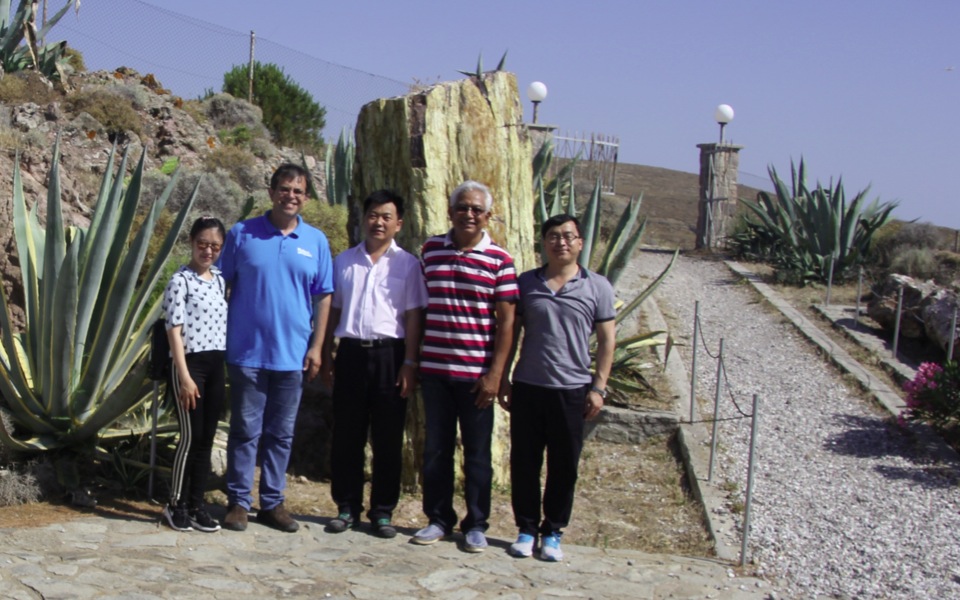
A global model when it comes to the protection of geological sites, naturally and historically rich Lesvos attracts many visitors every year, while the island has long been established as a place of research for scientists from around the globe.
Given that both the eastern Aegean island and certain areas in China have been recognized by UNESCO as Global Geoparks, the foundations have already been laid for a broader collaboration between the two countries, with the Greek island representing Europe. As a result, the Natural History Museum of the Lesvos Petrified Forest is currently forging ties with academic institutions and leading museums, among other organizations, in an effort to promote the island’s petrified forest, volcanic geotopes, biodiversity, natural history and culture.
Among the most recent efforts to bear fruit is a collaboration promoted by Nikos Zouros, the museum’s director and geography professor at the University of the Aegean, with geoparks, museums and research institutes involved in the management and promotion of China’s geological sites.
Located close to Sigri, in the island’s western part, the Natural History Museum of the Lesvos Petrified Forest attracts about 30,000 visitors per year, and when one adds the visitor numbers to the petrified forest’s four main parks (situated in areas of Bali Alonia, Hamandroula, Plaka and Nisiopi), the total comes to about 90,000 every year.
Chinese delegations from the Wudalianchi Geopark in northeastern China, the Zhijindong Caves Geopark in the country’s southeast and the Great Wall of China’s geopark in the area of Yanquing near Beijing, visited Lesvos in July.
“The aim of the visits was to explore the possibilities for cooperation, especially in terms of promoting and protecting geological sites, given that Lesvos is considered an international model in the field. The Chinese delegations did not limit themselves to visits to the petrified forest and the island’s volcano sites, but also examined the possibilities of genuine collaborations through staff exchanges, shared research activities as well as the display of the island’s geo-sites at Chinese geopark museums, a move that could contribute to a broader showcase of the petrified forest and Lesvos in China,” Zouros told Kathimerini.
As part of the collaboration, a delegation from the Lesvos geopark was invited to visit China in early August. The team visited the Great Wall’s geopark in the area of Yanquing, where the delegation observed first-hand the maintenance issues at Beijing’s petrified forest and contributed to the preservation of petrified trees with an exchange of know-how. According to Zouros, this collaboration will continue in the next two years, with particularly positive results expected regarding the promotion of Beijing’s petrified forest as well as petrified trees which have been discovered on the Greek island alongside the Kalloni-Sigri road.
Within the framework of cooperation between the Aegean University and the China University of Geosciences, a group of students from the latter’s Faculty of Earth Sciences recently arrived on Lesvos for a field trip. The agenda included a visit to the museum and the petrified forest.
Professors Wang Genhou and Zhang Jianping were in charge of the visit, which was taking place for the first time. According to the professors, the student trip “highlighted the possibilities that are being developed through the collaboration, in view of establishing both the petrified forest and the Lesvos geopark as a model educational destination for students at European universities.”
The Chinese visitors were expected to visit the bays of Gera and Kalloni, the volcanoes of Lepetymnos and Vatoussa, the volcanic formations in the areas of Mesotopos and Eresos and the impressive Voulgaris River gorge, among other places.
Their itinerary also included visits to areas of ecological interest as well as the wetlands of Kalloni, in the footsteps Aristotle and Theophrastus. The Museum of Industrial Olive Oil Production of Lesvos in Aghia Paraskevi, the Vareltzidena Mansion in Petra, Molivos Castle and the Mytilene Archaeological Museum were also on their list of places to see.
Their visit was also expected to serve as a platform for discussion regarding the possibility of a broader collaboration through educational trips, participation in students’ training programs as well as other education and research programs.
